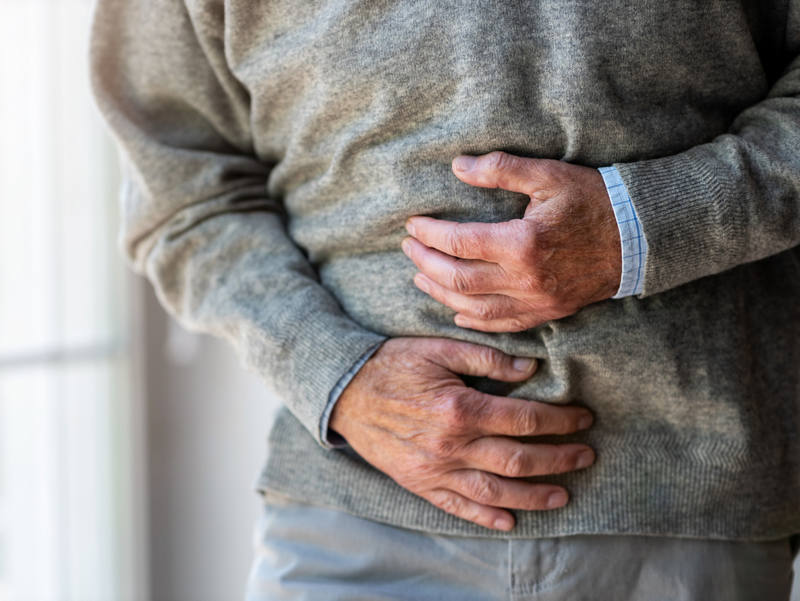How healthy is spicy food?

People who like spicy food, and don’t eat it in excessive amounts, benefit from various healthy effects: it stimulates digestion and metabolism and can even trigger the release of happy hormones.
Effect of spicy food: what happens during a “pepper high”?
Sweet, sour, bitter, salty and umami are different types of tastes that we perceive with our tongue. Spicy, on the other hand, is not a taste, but is caused by our body reacting to pain. The capsaicin in chilli peppers, piperine in pepper, allicin in garlic and gingerol in ginger all irritate the ends of pain-conducting nerve fibres. These react to the spicy substances as though they were experiencing heat above 43 degrees, and therefore report a sensation of pain to the brain.
Happy hormones released in reaction
Our body reacts to this by increasing blood flow to the tissue. In small amounts, the effect is stimulating and enhances our taste experience. Larger quantities, however, can lead to sweating and hot flushes – and also to what is known as a «pepper high». This is when our body tries to relieve the pain by releasing endorphins, colloquially known as the happy hormones.
Is it healthy to eat spicy food?
- Spicy food can aid digestion. It stimulates the secretion of gastric juice, making it easier to digest fatty foods, in particular.
- Spicy substances in food increase the flow of saliva. This in turn can have a positive effect on dental health.
- As a result of spicy food, tissue is better supplied with blood, our body temperature rises and this boosts our metabolism.
- When suffering from a cold, eating spicy food can have a mucus-dissolving effect. And because mucous membranes, such as those in the nose, are better supplied with blood, spicy food can also clear a blocked nose.
Is it dangerous to eat spicy food?
However, those who have a sensitive stomach, or are prone to diarrhoea or heartburn should exercise caution when eating spicy food. The spiciness irritates the stomach and intestinal mucous membranes, which can lead to stomach pain. People who suffer from kidney or urinary bladder diseases and young children should also avoid spicy foods.
How spicy food affects metabolism
Spicy food can cause the body temperature to rise. We sweat, and the sweat cools the body down again. This process costs energy. In addition, spicy food boosts metabolism and can stimulate digestion.
Choose the right level of chilli pepper pungency
There are actually about 4,000 varieties of chilli peppers in the world, all differing in appearance and colour. How hot the chilli peppers are also depends on how much sun they have received. Accordingly, chillies from a greenhouse are milder than those grown outdoors. Chilli peppers are used for cooking in different ways: fresh, dried, ground or in sauces. «Beginners» are advised to use chilli powder to start with, because it's easier to dose than fresh chilli peppers.
Pungency level according to the Scoville scale
The Scoville scale is used to measure how much of the above-mentioned capsaicin a food contains. This will give the corresponding pungency, or spiciness, level. Depending on capsaicin content, pungency levels are approximately as follows:
- 0-10: Bell peppers
- 100-500: Banana peppers
- 2’500-5’000: Tabasco sauce
- 30'000-50’000: Pure cayenne pepper
- 100'000-200’000: Pepper spray
- 100'000-350’000: Habaneros
- 9'000’000: Mad Dog 357 No.9 Plutonium spiciest chilli sauce
- 16'000’000: Pure capsaicin in crystal form
The capsaicin contained in chilli also enables food to be preserved naturally. Capsaicin has an antibacterial and fungicidal effect, thus inhibiting the formation of mould.
Too hot?Eaten something too spicy – what to do?
If something is too spicy for you, drink something fatty. The famous glass of milk – or also yoghurt or a piece of cheese – provides relief, since capsaicin is lipophilic, i.e. fat-soluble. Even if a dish has been seasoned too spicily, cream or coconut milk, as well as sugary ingredients such as honey, can temper the spiciness.



